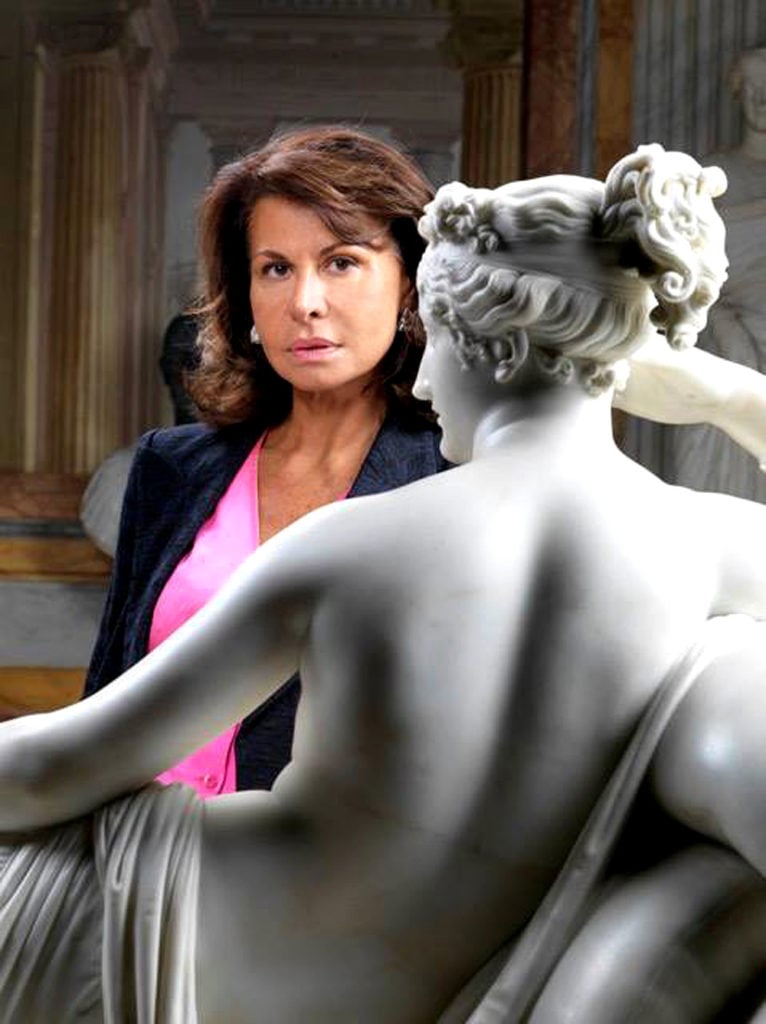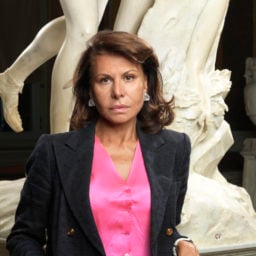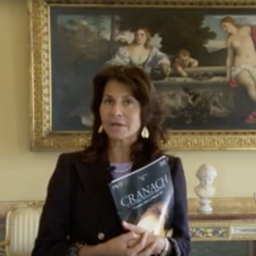The director of one of Rome’s most prestigious museums refuses to be off her stride. Anna Coliva, who was suspended last year after an anonymous complaint that she was spending working hours in the gym, is back in charge of the Galleria Borghese.
After her dramatic suspension over alleged “absenteeism,” the director returned to her position not only exonerated but also encouraged by the international support she received while fighting the accusations. Last year, an online petition received more than 2,000 signatories calling for her reinstatement. She argued in court that the overtime she worked was far greater than time spent at the gym.
In the enforced weeks away from the gallery, Coliva never took an actual break from her job, she tells artnet News. She continued to work on a Picasso sculpture exhibition, which opened last October, although she had to wait until November to be officially reinstated by the Italian culture ministry.
Despite the ordeal over her alleged exercise schedule, and the fall-out, which her representative described at the time as an “Erdogan-style” ruling, Coliva is looking forward not back. She has just opened an exhibition that juxtaposes Lucio Fontana’s slashed canvases, ceramics, and crucifixes with the Borghese’s antiquities and Old Masters, and 2020 will all be about Raphael on the 500th anniversary of the artist’s death.
artnet News spoke with Coliva about her suspension, Italian politics, curating an Italian superstar alongside Roman antiquities, as well as the fraught business of lending works by Leonardo in Italian museums to the Louvre’s blockbuster show this fall.
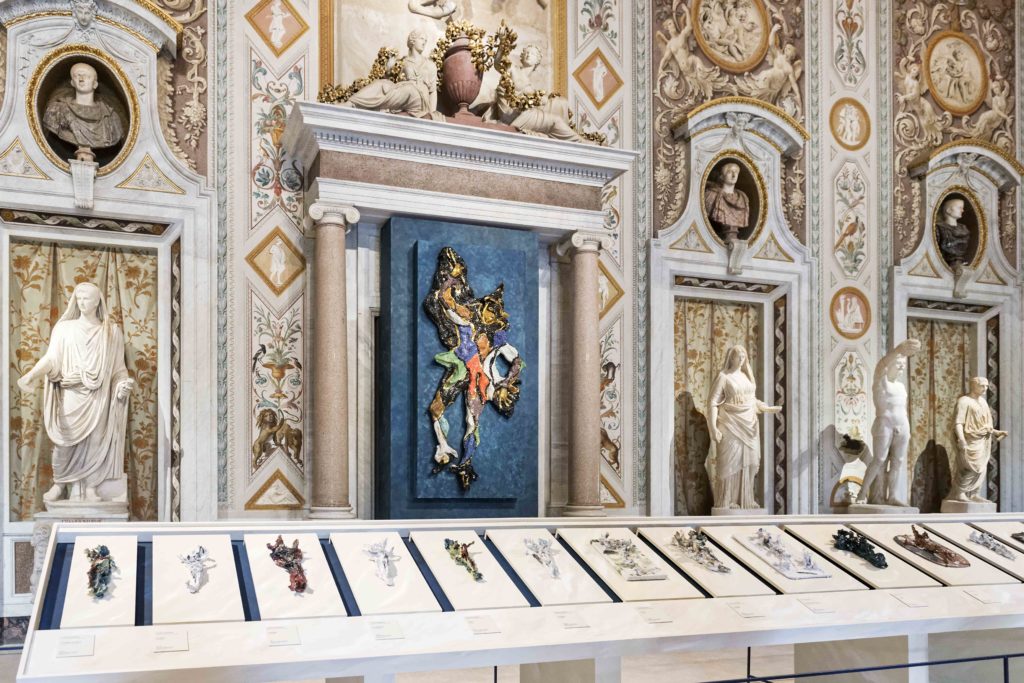
Exhibition Lucio Fontana, Galleria Borghese. Installation views (2019). Photo: Niccolò Ara. © Fondazione Lucio Fontana by SIAE 2019.
I understand that the Fontana exhibition is the first show you have curated since your return to the museum. How does that feel?
It is the second one, actually. I already inaugurated “A Temporary Shelter” by Zhang Enli. a site-specific work for the Contemporary Commissions project.
As far as how I feel, well… It seems to me that everything is distant now, almost forgotten. This is also because, thanks to the ministry’s reconsideration, following the simplest verifications, my absence did not last six months but rather a little more than two. But I still ask myself how such things could happen in Italy to those who try to do their work as best as possible.
It must have been frustrating during those months.
In the end, the only thing I could do was to continue to make every effort in the preparation of the exhibition “Picasso: The Sculpture,” which was, in fact, inaugurated as planned. This did not leave me any room to think about what to do in my free time.
How did you feel about the huge response from the art world calling for your reinstatement?
I was impressed by it. I would never have expected such high regard for me, and such love and consideration for the Borghese Gallery.
You mentioned upon your return that “some bitterness remains for everything that happened.” What kind of reactions did you receive from your colleagues when you returned?
I found a burning and unforgettable intensity in the loyalty to the work itself, and in the extremely dignified expression of their affection. The pleasure of resuming my daily collaboration with them was so great that it canceled any bitterness.
What should be done to stop something similar happening to another Italian museum director?
Unfortunately, in Italy, “the competition” often resorts to inappropriate means. Perhaps we could commission an allegory from an artist, like the Renaissance or Baroque paintings of Verità scoperta dal Tempo (Truth discovered by Time) or… La Calunnia (The Calumny).
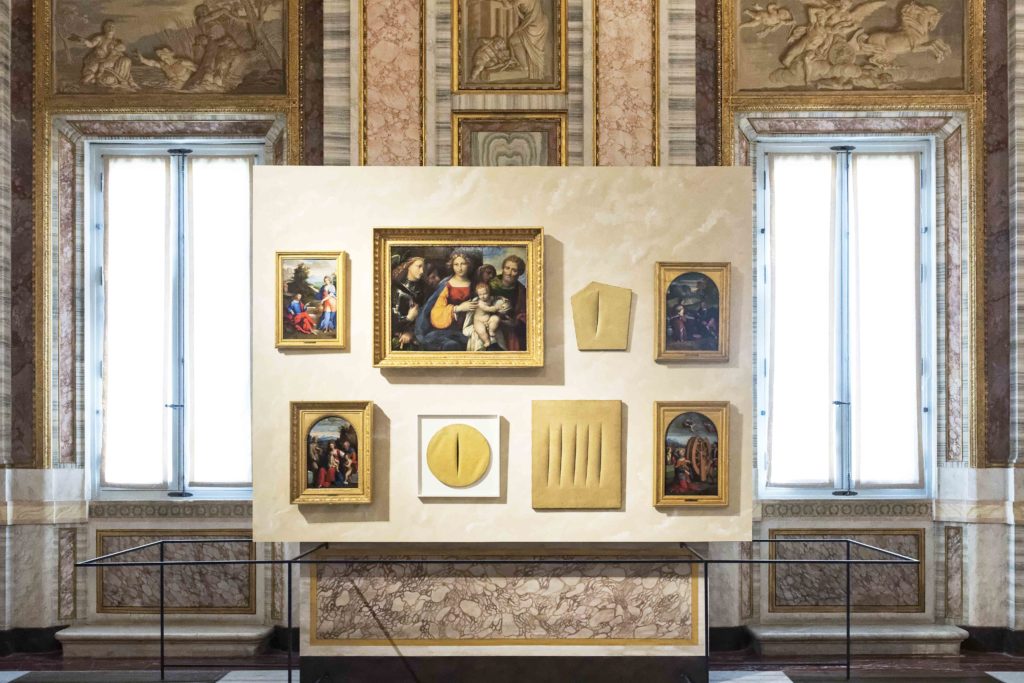
Lucio Fontana, Galleria Borghese. Installation views (2019). Photo: Niccolò Ara. © Fondazione Lucio Fontana by SIAE 2019.
Can you tell me a bit about the Lucio Fontana exhibition. You have integrated Fontana’s works into the galleries rooms, which are full of Renaissance and Baroque masterpieces.
[It is] certainly an homage to Fontana, the most important [Italian] artist of the second half of the 20th century, to whom Rome has never devoted much attention. Yet, it was conceived keeping in mind what I would like to communicate about the Borghese Gallery to its public: its strength, which always makes the museum the subject and protagonist of each exhibition, and never the object or “location.”
The simple and absolute idea, the pure thought that led Fontana to conceive the infinite and to take ownership of it, is highlighted in all its power in this place; a place in which masterpiece paintings tell us how it has always been an arduous task for artists to represent space, and how brilliant they had to be to achieve it. Through Fontana, we have the key to penetrate the works of the collection in a brilliant manner and discover the various ways—illusionary, geometric, symbolic—in which the “fiction” of space was resolved in the past.
How do you navigate such distinct periods of art history?
I think that there is only one art, and that the problems that artists had to solve have always been the same. One must also consider, however, that in the teaching of the history of art, we are less “sector-oriented” in Italy than in the US. There is more continuity and interconnectedness of the problems between the periods. Specialization is emphasized less.
Italy is going through major political changes. It seems that, more so than in other countries, the government and the museums are closely intertwined. How is the current political climate affecting your work?
Politics and government have always been very pervasive in Italy, and not only in museums. I hope that the recent reforms, which have some critical elements that need to be corrected, will be improved and further developed, but not stopped, because they have opened up many more dynamic management opportunities for the museums. Continuous counter-reforms of the reforms themselves end up weakening the institutions.
The culture minister has indicated he may overturn the previous Italian government’s decision to open top Italian museum director posts to international candidates. Do you believe these top museum jobs should be restricted to Italians?
[I support] international competitions [that are] open to highly qualified candidates, as envisioned by the same European rules. However, I believe that the issue was framed badly from the beginning, and misunderstood by the press. The controversy was brought up regarding the term “foreigners,” but the word itself was misused. In reality, those who opposed this transparent selection method wanted to favor “Italians,” yes, but internally, that meant “ministerial” candidates, as opposed to the non-ministerial candidates.

Exhibition Lucio Fontana, Galleria Borghese. Installation views (2019). Photo by Niccolò Ara, copyright Fondazione Lucio Fontana by SIAE 2019.
The Louvre has had a difficult time securing loans from Italian museums for its major Leonardo exhibition. Does your museum intend to send its work to the show? Do you think your fellow Italian museums are right to hold back?
The Borghese Gallery has already formalized a longstanding loan request by the Louvre for [its] Leonardo. This occurred because of the collaboration agreement between Italy and France for the celebrations of Leonardo—and subsequently for Raphael. We all hope that these agreements [signed in 2017] will be respected.
What is coming up for the rest of the year, and in 2020?
In the fall, we will inaugurate a great exhibition dedicated to Luigi Valadier, a master Roman silversmith and bronze maker [from the 18th century] who did much work for the Borghese family, and for all the popes and princes of the time. [He] left his magnificent mark behind in Villa Borghese. It is a show that is almost fundamental to the identity of the museum. It will build on the one held last winter at the Frick Collection.
For Italy, 2020 will be the year of Raphael. The Borghese Gallery already dedicated a large exhibit in 2006 [to the artist], which is no longer repeatable, so it will organize a show around the theme of “the Raphaels of the Borghese” in which new discoveries will be presented. A research project will also be conducted throughout 2020, based on investigations of advanced diagnostics on our Deposizione Baglioni (Baglioni Deposition) by Raphael, generously funded by Bank of America.
Lucio Fontana’s “Earth and Gold” is on view at the Galleria Borghese, Piazzale Scipione, Borghese, 5, Rome, May 22–July 28, 2019.
